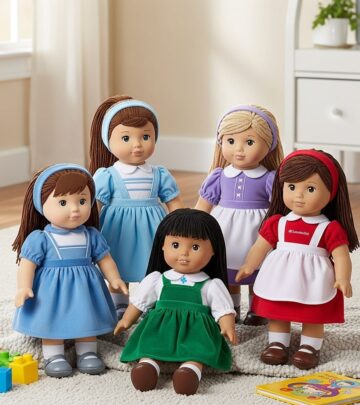How to Tell Kids the Truth About Santa Claus
Honoring childhood wonder while nurturing trust and joyful family bonds.

Is Santa Real? Navigating the Big Conversation with Your Kids
The image of Santa Claus—rosy-cheeked, jolly, and aglow in a red suit—feels inseparable from Christmas itself. For generations, parents have delighted in nurturing the myth of Santa, watching children’s eyes light up at the idea of a magical gift-giver who circles the globe in a single night. But inevitably, there comes a moment in childhood when the question arises: Is Santa real? For many parents, it’s both a rite of passage and a bittersweet sign their little one is growing up.
When Do Children Start Questioning Santa?
Experts say children often start pondering the reality of Santa—and other fantastical elements—at surprisingly young ages. By age seven, many kids begin to question how Santa could visit every child worldwide, fit down a chimney, or manage reindeer that fly. This curiosity signals the beautiful, if sometimes poignant, progression from early childhood wonder to a more questioning, analytical stage of development.
- Typical ages for doubt: 6–8 years old
- Common triggers: Schoolyard conversations, catching parents wrapping gifts, noticing inconsistencies in Santa stories
- Developmental milestone: Children move from magical thinking to concrete reasoning
It’s natural for parents to feel a bit sad about this transition, as it marks the end of a magical chapter in family life.
Why Do Children Believe in Santa?
Santa traditions endure because believing is a joyful—and developmentally important—part of childhood. The excitement surrounding Santa fuels imagination, fosters hope, and encourages kids to look beyond what they can see and touch. This kind of belief, even when directed at fictional or magical characters, actually prepares children for broader life skills: having hope, trusting in unseen good, and practicing empathy and kindness.
- Imagination boost: The Santa story nurtures creativity and storytelling in young minds.
- Belief as a skill: Sustaining faith in something unseen helps children believe in themselves, others, and abstract values.
- Family bonding: Rituals—writing letters to Santa, leaving cookies, tracking his sleigh—create cherished memories.
Recognizing the Signs: Is It Time for the Truth?
There isn’t a single ‘right’ time to talk to your children about Santa, but certain clues suggest when it’s approaching:
- Your child starts asking direct questions: “How does Santa visit kids without chimneys?”
- They express doubts based on things they’ve observed: “I saw two Santas at the mall.”
- They want evidence: “How come Santa’s handwriting looks like yours?”
If these conversations come up, it’s helpful to gauge whether your child is merely curious or truly ready for the truth. Often, children ask because they’ve already begun to suspect, and they’re looking to you for gentle confirmation.
How to Prepare for the Conversation
Navigating your child’s Santa questions doesn’t have to be stressful. Here’s how you can mentally prepare and approach the subject with compassion and care:
- Reflect on family values: Decide what feels authentic for your family, considering honesty, tradition, and the importance of wonder.
- Find the right time: Choose a calm, private moment rather than a bustling holiday event.
- Talk to other caregivers: Make sure everyone—partners, grandparents, or close family friends—are on the same page about what to say.
Gentle Approaches: What to Say When Your Child Asks, “Is Santa Real?”
When your child asks the big question outright, consider these evidence-based, sensitive strategies:
| Approach | How to Put It Into Practice | Benefits |
|---|---|---|
| Ask What They Believe | “What do you think about Santa?” lets them lead the conversation. | Respects their feelings and thoughts; reduces abruptness. |
| Focus on the Spirit of Santa | Explain that Santa represents giving, kindness, and magic. | Preserves the heart of the tradition. |
| Tell the Story | Share the real-life history and legends of St. Nicholas. | Teaches about history and different cultural traditions. |
| Empower the Child | Invite them to help keep the Santa magic alive for younger kids. | Makes growing up feel like a privilege, not a loss. |
No matter your approach, the goal is honesty with empathy—balancing truth-telling with the preservation of the wonder and joy that make childhood magical.
What If Your Child Isn’t Ready?
Not every question signals readiness for the full truth. Here are signs your child may still want (or need) to believe and tips for handling them:
- Ambivalent questions: If they waffle between believing and doubting, offer gentle, open-ended answers like “What do you think?”
- Emotional responses: Tears or upset may mean it’s best to preserve the magic a while longer.
- Social context: Consider younger siblings who still believe; coaching your older child to help keep the fun alive can be empowering.
Let your child set the pace. They may go back and forth for a year or more, and that’s perfectly healthy. Life’s big questions take time and patience to process.
Keeing the Magic Alive Without “The Lie”
Some parents worry that the Santa myth equals lying. But you can keep the wonder alive while still being honest by emphasizing the spirit of belief—in generosity, joy, and love—and sharing stories from different cultures about gift-givers, both magical and real.
- Explain how Santa is a symbol of giving and joy
- Share tales of St. Nicholas and other holiday saints
- Introduce children to traditions from around the world
This approach helps children learn that magic exists in kindness, hope, and togetherness, even when the literal Santa story falls away.
Transitioning from Belief: Ways to Celebrate Growing Up
When children find out the truth, it can feel like a loss—but it can also be a new source of pride. Inviting them into the secret world of keeping Christmas magic alive for others can help make the transition joyful.
- Let them help wrap presents or eat the cookies “left out for Santa”
- Encourage them to write notes from Santa for younger siblings
- Talk about special holiday memories you had at their age
- Highlight the joy of giving rather than receiving
Addressing Common Questions from Kids (and Parents)
Frequently Asked Questions
Q: What if my child hears the truth from someone else?
A: If your child learns the truth at school or from a friend, stay calm. Ask what they heard and how they feel about it. Validate their feelings and offer your family’s perspective.
Q: Is it wrong to “lie” about Santa?
A: Many experts agree that fostering belief in Santa is developmentally appropriate and tied to imagination and joy. When the time comes, a gentle, honest conversation helps maintain trust.
Q: How can I keep holiday magic strong even after they know?
A: Center your celebrations on togetherness, generosity, and laughter—these are the true magic of the holidays. Think new traditions, festive movies, baking, and memory-making adventures.
Q: Should I reveal who stuffs the stockings and wraps the gifts?
A: It’s up to your family and your child’s age. You might let them in on small secrets gradually, so they can join in the joy of playing Santa.
Tips for Preserving Holiday Magic—No Matter What
- Create rituals: Advent calendars, cookie-baking days, holiday crafts, and movie nights build anticipation.
- Make-believe is welcome: Encourage play, dressing up, and storytelling around the holiday.
- Give back: Involve kids in holiday acts of kindness and charity; explain that this is the spirit Santa represents.
- Focus on love: Remind your children that the greatest gift is the love you share as a family.
Encouraging Openness: Letting Your Child Lead
There’s as much wisdom in following your child’s cues as there is in expert advice. Often, children manage their own transitions with remarkable resilience:
- Let them return to believing for comfort if they want, even after they know.
- Answer questions patiently and kindly—don’t rush them to grow up quicker than they’re ready.
- Share your own memories about discovering the truth, and reassure them it’s a natural part of growing up.
The Lasting Gift of Santa: Imagination, Belief, and Family Joy
Ultimately, discovering the truth about Santa doesn’t mean the end of holiday magic. Rather, it marks the beginning of a different kind of magic—the appreciation of family warmth, cherished traditions, and the knowledge that joy is something you can create and share, year after year.
With patience, warmth, and the right words, you can guide your child through one of childhood’s most pivotal moments, ensuring that the spirit of Santa—giving, wonder, and togetherness—lives on in your family for holidays to come.
References
- https://icl.coop/frm_display/holiday-essay-entries/
- https://www.mybabysheartbeatbear.com/blogs/pregnancy/keeping-the-magic-of-santa-alive-the-true-story
- https://www.houzz.com.au/magazine/how-to-convince-your-kids-santa-is-real-stsetivw-vs~21309237
- https://www.countryliving.com/life/kids-pets/a37332840/is-santa-real-how-to-tell-kids/
- https://theeverymom.com/why-i-let-my-kids-believe-in-santa/
- https://www.countryliving.com/life/kids-pets/a37562920/how-old-is-santa-claus/
- https://www.countryliving.com/life/kids-pets/a37367176/santa-claus-phone-number/
Read full bio of medha deb












